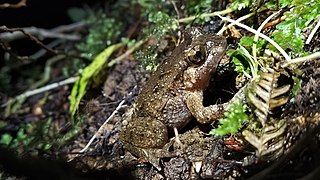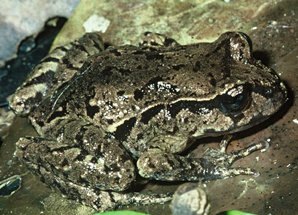
Moa are an extinct group of flightless birds formerly endemic to New Zealand. There were nine species. The two largest species, Dinornis robustus and Dinornis novaezelandiae, reached about 3.6 m (12 ft) in height with neck outstretched, and weighed about 230 kg (510 lb) while the smallest, the bush moa, was around the size of a turkey. Estimates of the moa population when Polynesians settled New Zealand circa 1300 vary between 58,000 and approximately 2.5 million.
The New Zealand swan or poūwa is an extinct indigenous swan from the Chatham Islands and the South Island of New Zealand. Discovered as archaeological remains in 1889, it was originally considered a separate species from the Australian black swan because of its slightly larger bones, and swans not having been introduced to New Zealand until 1864. From 1998 until 2017, it was considered to be simply a New Zealand population of Cygnus atratus, until DNA recovered from fossil bones determined that it was indeed a separate species, much larger and heavier than its Australian relative.

Leiopelma is a genus of New Zealand primitive frogs, belonging to the suborder Archaeobatrachia. It is the only genus in the monotypic family Leiopelmatidae. The leiopelmatids' relatively basal form indicates they have an ancient lineage. While some taxonomists have suggested combining the North American frogs of the genus Ascaphus in the family Ascaphidae with the New Zealand frogs of the genus Leiopelma in the family Leiopelmatidae, the current consensus is that these two groups constitute two separate families. The four extant species of Leiopelmatidae are only found in New Zealand.

The biodiversity of New Zealand, a large island country located in the south-western Pacific Ocean, is varied and distinctive. The species of New Zealand accumulated over many millions of years as lineages evolved in the local circumstances. New Zealand's pre-human biodiversity exhibited high levels of species endemism, but has experienced episodes of biological turnover. Global extinction approximately 65 Ma resulted in the loss of fauna such as non-avian dinosaurs, pterosaurs and marine reptiles e.g. mosasaurs, elasmosaurs and plesiosaurs. The ancient fauna is not well known, but at least one species of terrestrial mammal existed in New Zealand around 19 Ma. For at least several million years before the arrival of human and commensal species, the islands had no terrestrial mammals except for bats and seals, the main component of the terrestrial fauna being insects and birds. As recently as the 14th century a component has been introduced by humans, including many terrestrial mammals.

The bush moa, little bush moa, or lesser moa is an extinct species of moa from the family Emeidae.

Hochstetter's frog or Hochstetter's New Zealand frog is a primitive frog native to New Zealand, one of only four extant species belonging to the taxonomic family Leiopelmatidae. They possess some of the most ancient features of any extant frogs in the world.

The Hamilton's frog(Leiopelma hamiltoni) is a primitive frog native to New Zealand, one of only four extant species belonging to the family Leiopelmatidae. The male remains with the eggs to protect them and allows the tadpoles to climb onto his back where they are kept moist. It is named in honour of Harold Hamilton the collector of the type specimen. The holotype is in the collection of the Museum of New Zealand Te Papa Tongarewa.

The Maud Island frog is a primitive frog native to New Zealand, one of only four extant species belonging to the family Leiopelmatidae.

Hoplodactylus delcourti, also commonly known as kawekaweau, Delcourt's sticky-toed gecko and Delcourt's giant gecko, is an extinct species of lizard in the family Diplodactylidae. The species was the largest known of all geckos, with a snout-to-vent length (SVL) of 370 mm (14.6 in) and an overall length of at least 600 mm (23.6 in). Scientifically it is known from just one taxidermied specimen that was rediscovered unlabelled in a museum in France. The origin of the specimen is unknown; New Zealand and New Caledonia have been suggested. The idea that Hoplodactylus delcourti is the kawekaweau of Maori tradition has been contested.
The long-billed wren was a species of New Zealand wren endemic to the South Island of New Zealand. It was the only species in the genus Dendroscansor. It shares the name "long-billed wren" with the Brazilian bird Cantorchilus longirostris.
Trevor Henry Worthy is an Australia-based paleozoologist from New Zealand, known for his research on moa and other extinct vertebrates.

Pachyplichas is a genus containing two extinct species of New Zealand wren, a family of small birds endemic to New Zealand.

The North Island snipe, also known as the little barrier snipe or tutukiwi, is an extinct species of bird in the sandpiper family, Scolopacidae, that was endemic to New Zealand.
Leiopelma auroraensis, known as the Aurora frog, is an extinct species of frog that was found in New Zealand. One subfossil of the Aurora frog has been discovered in the Aurora Cave, Fiordland, New Zealand. It measured about 60 mm from the snout to the vent. It is named after the Aurora Cave for where it was found. The other extinct New Zealand frogs are Markham's frog and Waitomo frog. Aurora frog probably was a local form that had evolved from the more widely distributed Markham's frog.

The St Bathans fauna is found in the lower Bannockburn Formation of the Manuherikia Group of Central Otago, in the South Island of New Zealand. It comprises a suite of fossilised prehistoric animals from the late Early Miocene (Altonian) period, with an age range of 19–16 million years ago.

The Manuherikia Group is a fluvial-lacustrine sedimentary fill in the Central Otago area of New Zealand, at the site of the prehistoric Lake Manuherikia. The area consists of a valley and ridge topography, with a series of schist-greywacke mountains at roughly ninety degrees to each other. The Manuherika Group occurs in the current basins, and occasionally on the mountains themselves.
The Waitomo frog is an extinct species of the genus Leiopelma from New Zealand.

The Northland skink is an extinct species of skink which was endemic to the Northland Region of North Island, New Zealand. It is known from late Holocene subfossil remains.
The Waitomo Caves Discovery Centre is a museum located in the town of Waitomo in the North Island of New Zealand. The museum is also referred to as the Waitomo Caves Discovery Centre, the Waitomo Museum of Caves and the Waitomo Education Centre.














